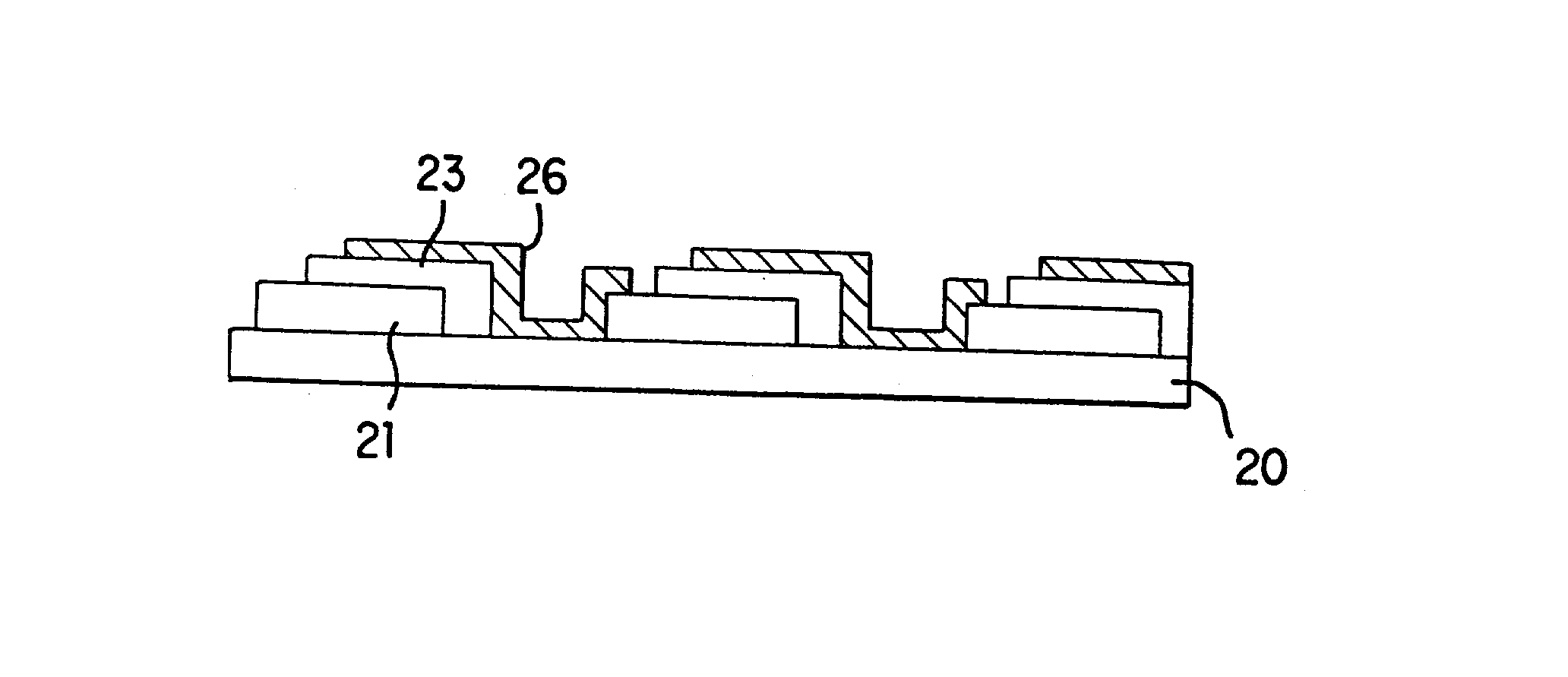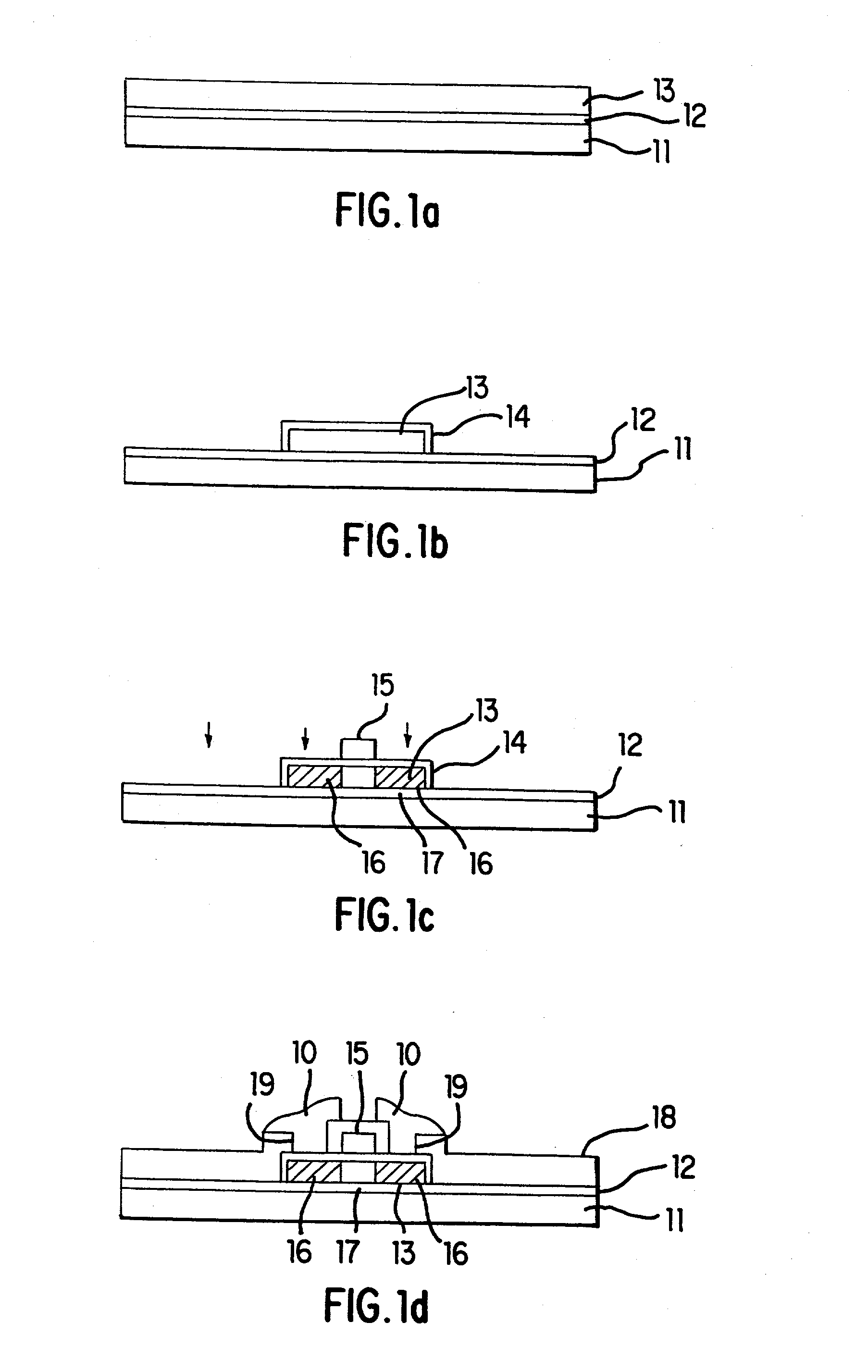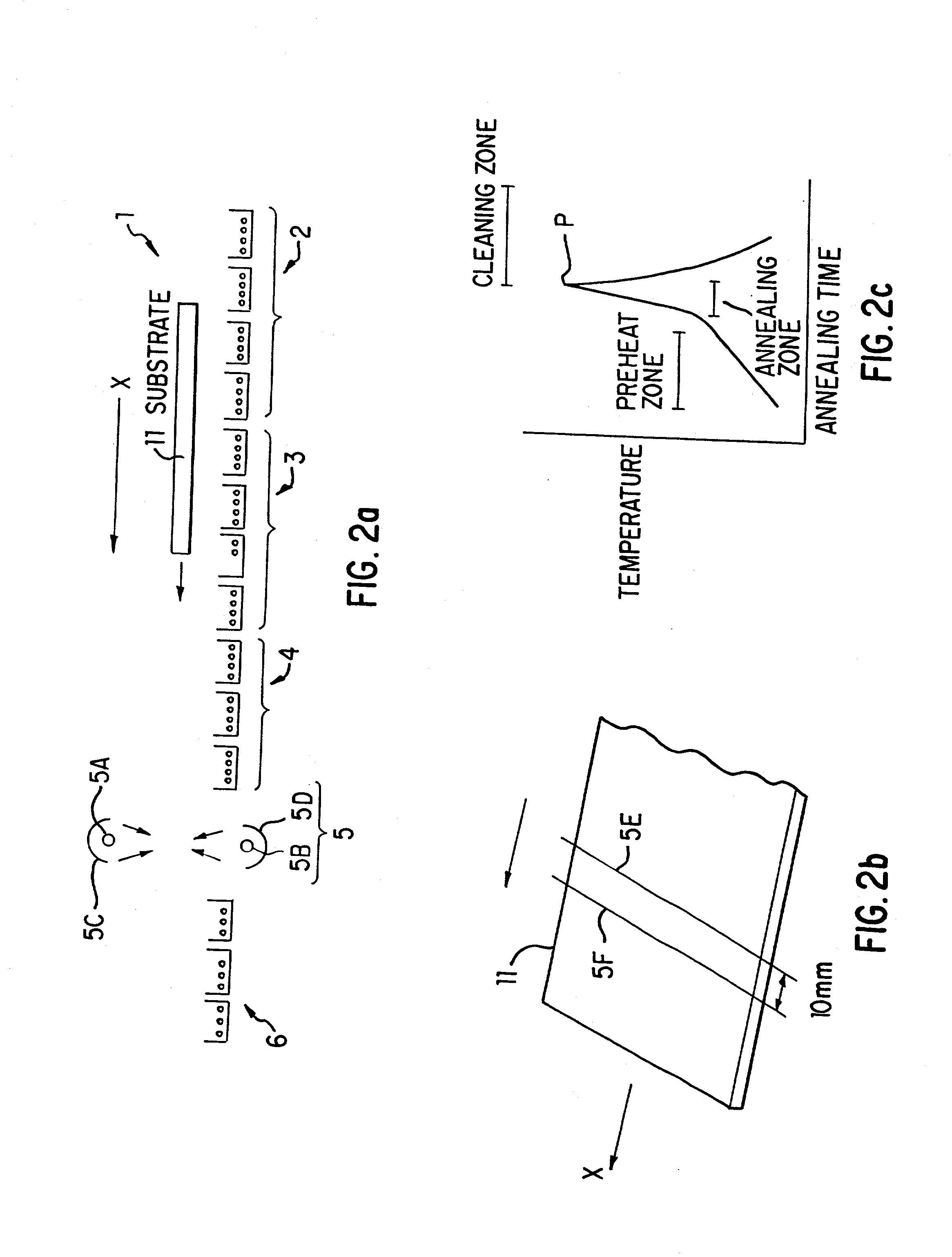Method for forming crystalline semiconductor layers, a method for fabricating thin film transistors, and a method for fabricating solar cells and active matrix liquid crystal devices
a technology of crystalline semiconductors and thin film, applied in transistors, basic electric elements, transistor manufacturing, etc., can solve the problems of difficult to achieve high-quality semiconductor layer formation, poor throughput, and subject to important limitations
- Summary
- Abstract
- Description
- Claims
- Application Information
AI Technical Summary
Benefits of technology
Problems solved by technology
Method used
Image
Examples
example 1
[0169] The explanation for this example will refer to FIG. 6. First, after an underlevel protection layer is formed on the surface of conventional glass substrate 20 (the underlevel protection layer is not shown in FIG. 6 for simplicity), the substrate-side first electrode (indium tin oxide (ITO) in this example) 21 is formed on top of this underlevel protection layer. This is formed by using photolithography after the deposition of a conducting film by a method such as normal sputtering. Because the present example supposes a solar cell structure in which the light is incident on the semiconductor layer from the substrate side (the bottom side in FIG. 6), transparent glass is used for the substrate and the substrate-side first electrode is also formed from a transparent conducting film. For the opposite structure in which the light incident on the semiconductor layer comes from the element side (the top side in FIG. 6), however, if the element-side second electrode is a transparent...
example 2
[0173] In Example 1 the formation of the first conductive semiconductor layer and the second conductive semiconductor layer was carried out by impurity diffusion into the intrinsic semiconductor layer, but in this example, impurity containing semiconductor layers are formed by a method such as CVD and solar cells are fabricated (refer to FIG. 7).
[0174] As in Example 1, after an underlevel protection layer is formed on the surface of conventional glass substrate 30 (in FIG. 7 as well, the underlevel protection layer is not shown for the sake of simplicity), substrate-side first electrode (indium tin oxide (ITO) in this example) 31 is formed on top of this underlevel protection layer (FIG. 7(a)). Next, first conductive semiconductor layer 32, essentially intrinsic semiconductor layer 33, and second conductive semiconductor layer 34 are formed in a layered structure on the surface of the substrate-side first electrode by a method such as CVD (FIG. 7(b)). In this example, p-type silicon...
example 3
[0177] While Example 1 showed an example of a solar cell structure in which the light was incident upon the semiconductor layer from the substrate side, this example shows one example of a structure in which the light is incident from the element side (the top side in FIG. 8) in contrast to Example 1 (refer to FIG. 8).
[0178] First, after forming an underlevel protection layer as necessary on the surface of substrate 40, which is inexpensive and has relatively good flatness such as might be found with glass, substrate-side first electrode 41 is formed from a material such as aluminum or platinum. As the material for the substrate-side first electrode, a conductive material such as a metal with high light reflectivity and high electrical conductivity is desirable. There are no special limitations on the substrate as long as it is stable with respect to thermal processing steps and chemicals in the fabrication of solar cells. Substrate-side first electrode 41 is formed by photolithogra...
PUM
| Property | Measurement | Unit |
|---|---|---|
| time | aaaaa | aaaaa |
| time | aaaaa | aaaaa |
| thermal resistance | aaaaa | aaaaa |
Abstract
Description
Claims
Application Information
 Login to View More
Login to View More - R&D
- Intellectual Property
- Life Sciences
- Materials
- Tech Scout
- Unparalleled Data Quality
- Higher Quality Content
- 60% Fewer Hallucinations
Browse by: Latest US Patents, China's latest patents, Technical Efficacy Thesaurus, Application Domain, Technology Topic, Popular Technical Reports.
© 2025 PatSnap. All rights reserved.Legal|Privacy policy|Modern Slavery Act Transparency Statement|Sitemap|About US| Contact US: help@patsnap.com



